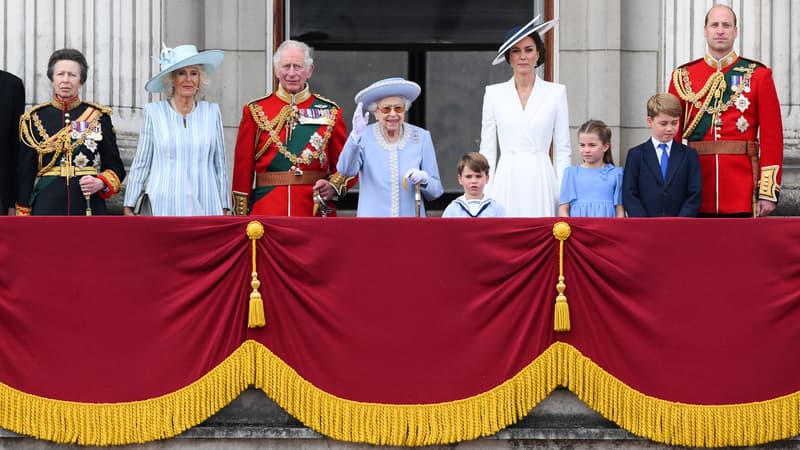Castles, security, official travel… Across the English Channel, the cost of the British monarchy is sometimes highlighted. But how much exactly is the British bill? If the royal family has long kept its accounts secret, it now shows a little more transparency, through a financial report that is published every year. Available online, the last one was broadcast last June.
This document gives information on the amount of the public subsidy that finances part of the expenses of the royal family, the so-called “royal subsidy”. The latter finances the official trips of the royal family, receptions, the maintenance of the royal palaces and the salaries of the staff. According to the latest economic report, the total subsidy granted to the royal family during the 2021/2022 period amounted to 86.3 million pounds -almost 100 million euros-, or the equivalent of 1.49 euros per capita.
But this sum includes an extension that is currently granted to finance the renovation of Buckingham Palace in London. The Royal Palace benefits from an ongoing ten-year renovation programme, which was launched in view of the Queen’s Platinum Jubilee. What inflates the bill: if we remove these costs related to the reform of the palace, the real subsidy amounts to 89 cents of a euro per inhabitant.
royal grant
However, this does not mean that every Briton pays exactly 89 cents each year for the royal family. In fact, the British Crown owns land and real estate, known as crown estate, which generate revenue for the UK government. And, in return, the government gives back to the royal family a percentage of the profits generated by the crown estate.
At this time, due to the construction of Buckingham Palace, 25% of the profits from the crown estate are paid to the royal family. Normally, it is 15%.
This royal concession will continue after the death of Queen Elizabeth II, as confirmed by the new British monarch Charles III. “I confirm my will to perpetuate the tradition by transferring hereditary income, including the Crown’s assets, to my government for the benefit of all”, declared Carlos III during the proclamation ceremony at St. James’s Palace, in London, on last September. 10
security fees
If this royal grant is not taken directly from the British taxpayer’s pocket, the British taxpayer still pays part of the Crown’s expenses. This is the case for certain entertainment expenses and especially expenses related to the security of members of the royal family. There it is the taxes that finance them. However, the amount remains secret.
These sums are not disclosed “for reasons of confidentiality and security”, confirms François-Charles Mougel. “But they should not be negligible,” he stresses, recalling the unsuccessful steps taken by Prince Harry and his wife Meghan to benefit from the same levels of protection as other members of the royal family. “I think it amounts to tens of millions of euros certainly,” advances the specialist in British history.
This secrecy surrounding the royal family’s money remains a sore spot for some Britons.
“It activates the idea in part of the British population, especially today when the constrained expenses are becoming very heavy, that the monarchy is the symbol of inequalities, of wealth (…) and that it does not correspond to a democratized vision of financing royalties.
Source: BFM TV


